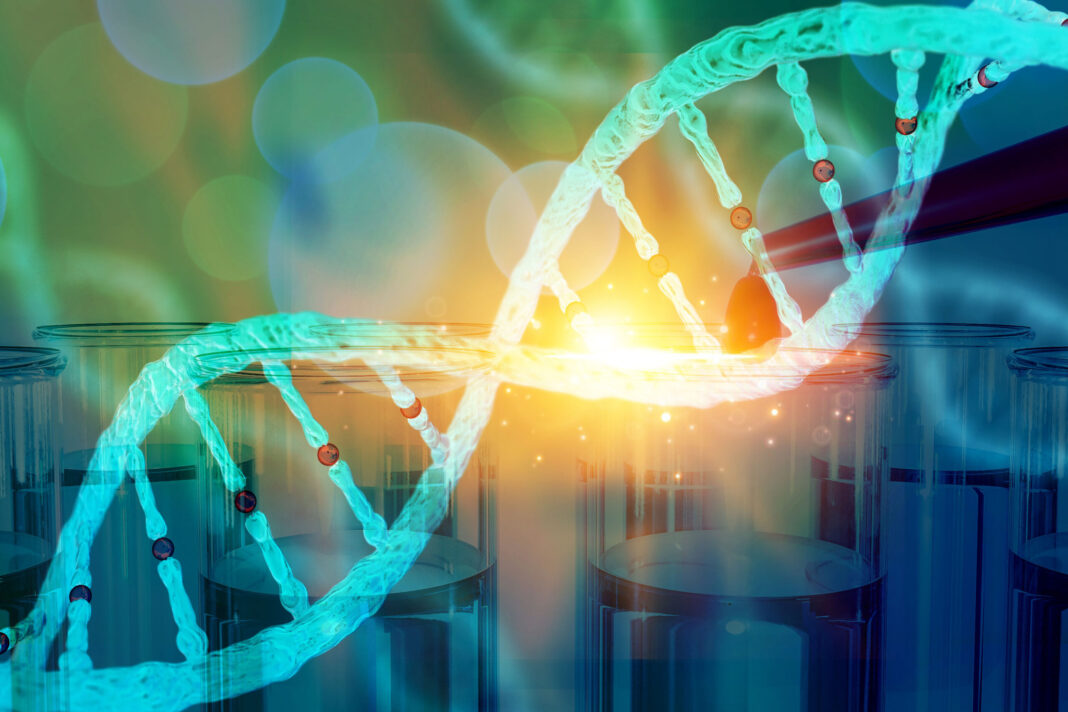At the start of the SARS-CoV-2 pandemic people who felt unwell had to join long queues for lab-based PCR tests and then wait for two days to learn if they were infected with the COVID-19 virus or not. Biomedical engineers at the University of New South Wales (UNSW) Sydney have now developed a rapid test strip technology that utilizes an autocatalytic Cas12a circular DNA amplification reaction (AutoCAR) system, which they claim is accurate as lab-based PCR testing, but offers fast, on-the-spot disease detection.
The team suggests applications of the technology, which is like having “PCR in your pocket,” may range beyond public health, and open up possibilities for biomedical and environmental diagnostics in the food industry, and within agricultural, and biosafety management sectors.
“Not only can we easily detect specific gene sequences in a sample, but, unlike PCR, we can do it at room temperature using a test strip that looks exactly like a well-known RAT test—you already know what to do with it,” said research lead Ewa Goldys, PhD, at UNSW’s Graduate School of Biomedical Engineering. “So, no more queuing for that PCR test in the future. Also, the cost is very low—currently less than a few dollars per test.”
Co-researcher Fei Deng, PhD, suggested that the new test strips could expedite rapid response to emerging pathogens such as mosquito borne or lumpy skin diseases, reveal hotspots of antibiotic resistance or help look for threatened animal species. “We think we created a new benchmark in biosensing—our gene-based tests will be able to be performed anywhere, anytime, by virtually anyone … This could transform human and animal infection control as well as quarantine and biodiversity conservation efforts,” Deng said.
Deng is first author of the team’s newly published paper in Nature Communications, which is titled “Topological barrier to Cas12a activation by circular DNA nanostructures facilitates autocatalysis and transforms DNA/RNA sensing.” In their report the team concluded, “… unlike other signal amplification methods used with CRISPR biosensors, such as SERS, metal-enhanced fluorescence, nanoenzymes, and field-effect transistors, AutoCAR does not require any sophisticated components or instrumentation, and it can be performed at room temperature, in a point-of-care setting.”
To generate test strips that would match PCR standards the team first made tiny DNA nanocircles containing a short sequence of the target DNA, such as the COVID virus, explainec co-author Yi Li, PhD. Each nanocircle is only about two nanometers in size. The DNA nanocircles and the tested sample are then mixed with CRISPR/Cas proteins, which are programmed by the UNSW team to cut DNA of the nanocircles, but only when activated by DNA from the targeted pathogen.
“The interaction of a suitably programmed CRISPR/Cas protein with the gene target we are trying to detect causes the DNA nanocircles to break up, linearise and become ‘fake targets’,” Li commented. The authors further explained, “… small circular DNA nanostructures which partially match guide RNA sequences only minimally activate Cas12a ribonucleoproteins. However, linearizing these structures restores activation.”
This approach then produces a molecular chain reaction. “We unleash a huge cascade of fake targets which is easy to detect with the testing strips, even if only a few molecules of the original gene target are present,” Li added. And as the authors further noted, “In contrast to conventional nucleic acid amplification technologies such as PCR, RPA, and LAMP48, AutoCAR provides a comparable sensitivity (1 aM) but without temperature cycling or heating, nor primer issues such as polymerization.”
The method was evaluated using samples of the COVID-19 virus, and helicobacter bacteria that cause stomach ulcers. In their paper the team noted, “… we tested the ability of AutoCAR-3 to directly detect PI3KCA H1047R mutations from human plasma. Blood samples were selected from patients with tumors known to harbor PI3KCA mutations, as well as control cancer patients without that mutation … The results show statistically significant discrimination between cancer and control samples … which can also serve as proof for the feasibility of DNA single nucleotide polymorphism detection.”
The team further confirmed that the system could detect target DNA in other types of clinical samples, such as saliva. “The results also show that the presence of targeted PIK3CA H1047R mutation sequences was detected with 100% accuracy.”
Goldys says the response from industry to the team’s innovation has been overwhelmingly positive. “The industrial and clinical rollout of our technology to the Australian industry has already begun, with the intention to keep the manufacturing onshore,” Goldys commented. “We will be building on the emerging industrial infrastructure for the RNA vaccine production.”
Some applications the new biosensing method could be in biosecurity, where testing strips could detect potential invasive marine species, Goldys further noted. Another application could be in environmental science, where DNA testing of the environmental samples could indicate the presence or absence of a particular threatened species. One intriguing potential use of the biosensing strips might be to detect cancer cells. “In our published study we were also able to detect cancer mutations in patients’ samples in a clinical setting,” Goldys pointed out. “We hope this will open a path towards universal monitoring of patients undergoing cancer therapies.”
Summarizing their results, the researchers concluded, “With its simplicity and minimalistic design, the autocatalytic AutoCAR system reported here promises a pathway to rapid, low cost, and ultrasensitive quantification of nucleic acids, including at point-of-care and in the field. This will expand the boundaries of CRISPR/Cas biotechnology and broaden its applications.”


